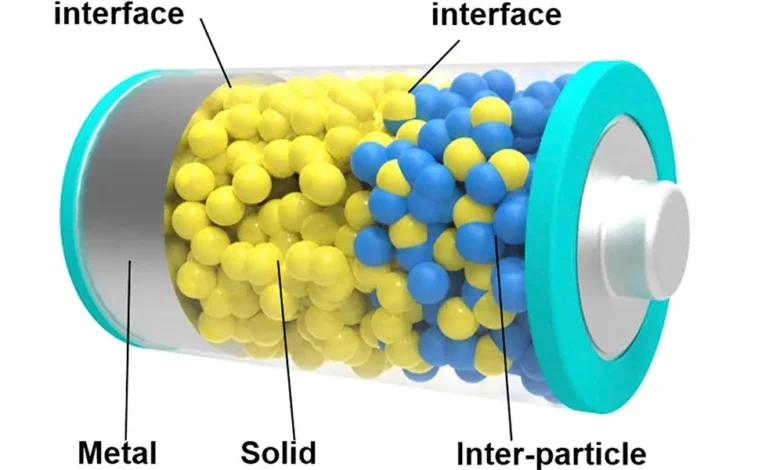
Batteries are essential tools that store and release electrical energy. They power everything from tiny watches to large electric vehicles. Think of them as energy boxes that make our devices work.
Inside each battery, there are specific materials that play vital roles. Some examples of battery materials are metals like lithium and nickel, and other substances that help store and move electricity. Knowing these materials helps us understand how batteries work.
In this article, we’ll explore the details of these materials. Our goal is to explain their importance and impact on battery performance. This knowledge is key for anyone interested in the future of technology.
What is the importance of understanding battery materials?
Better knowledge leads to better batteries. We can make them last longer and work better. It’s not just about power, though. Safe and green batteries matter, too. They’re kinder to our planet. Plus, knowing more means we can invent new, cost-effective batteries. This helps everyone, from gadget users to car drivers. In short, it’s about making our lives easier and keeping Earth healthy.
Which three components are crucial for constructing batteries?
Here are three important components to consider when constructing batteries:
-
Electrodes
Electrodes are key parts of a battery. They come in two types: one gives off electrons, and the other receives them. This flow of electrons is what powers your devices. Good electrodes mean more power and longer battery life. They’re made from materials like lithium and graphite. In simple terms, electrodes are the power source within your battery.
-
Electrolytes
Electrolytes in batteries are also crucial. They act like a path for electric charge. This charge moves between the two electrodes. Good electrolytes help your battery charge faster and last longer. They are usually liquids or gels. So, electrolytes are the battery’s power highway.
-
Separators
Separators in batteries play a safety role. They keep the electrodes apart to avoid short circuits. These thin layers are vital for a battery’s stability. Good separators mean a safer and more reliable battery. They’re often made from materials like polymer. In a nutshell, separators are the guardians of your battery.
What are the most common battery materials?
So, let’s discuss the most common materials using in batteries:
-
Anodes
Anodes are one main part of a battery. They release electrons during battery use. This release provides power to our devices. Good anodes increase battery life and performance. Common materials for anodes include lithium and graphite. Simply, anodes are where the battery’s power starts.
-
Cathodes
Cathodes are another essential part of a battery. They accept electrons when you charge your device. This process stores the energy. Better cathodes mean more energy storage and longer use. Materials like lithium cobalt oxide are used for cathodes. So, cathodes store the power for later use.
-
Graphite
Graphite is often used in batteries, especially in anodes. It’s good at storing electrons, which means more power. Graphite is durable, helping batteries last longer. It’s also light and conducts electricity well. This makes it ideal for portable electronics. Basically, graphite helps keep batteries powerful and long-lasting.
-
Lithium
Lithium is a star in Battery Materials. It’s lightweight and stores lots of energy. This is why your phone and laptop batteries use it. Lithium batteries recharge quickly and last long. But, they can be expensive and need careful handling. Lithium’s energy density makes it widely used.
-
Silicon
Silicon is gaining popularity in batteries. It holds more charge than graphite. This means batteries can last longer. Silicon expands and contracts during use, which is a challenge. Researchers are finding ways to make it more stable. Silicon’s potential for high energy makes it a key material.
-
Sodium
Sodium is an emerging material. You can find it everywhere, and it costs less than lithium. Sodium batteries are more secure and better for the environment. They can store a lot of energy for big things, like power grids. But they don’t have as much energy as lithium batteries. Just because sodium is easy to get and safe to use, that’s why it has a lot of potential.
Future Developments
Battery technology is always improving. Now, we’re seeing batteries charge faster and last longer. There’s a big push for eco-friendly options, too. Companies are exploring new materials for better performance. We’re also seeing smart batteries that manage their own energy use. These advancements mean more power in smaller, safer batteries.
In battery materials, there’s a lot of innovation. Scientists are working on materials that store more energy and are less harmful to the environment. There’s a move towards using more abundant elements, like sodium. Techniques for recycling batteries are also getting better. Plus, new manufacturing methods are making batteries cheaper. All this leads to better, greener batteries for the future.
Final Thoughts
In conclusion, we’ve seen how vital battery materials are. They power our daily lives and are key to better batteries. Remember, electrodes, electrolytes, and separators are crucial. Also, materials like lithium, silicon, and sodium make a big difference. Understanding these helps us appreciate and innovate in battery tech. It’s all about smarter, safer power for our future. Thank visiting articlemica.com


